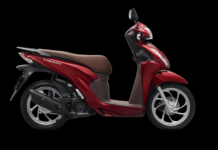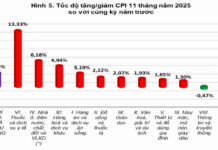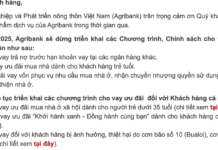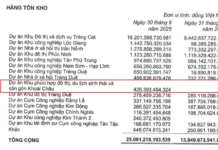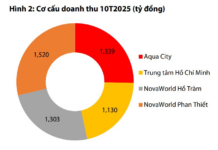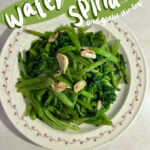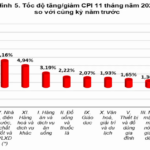Vietnamese cuisine never fails to fascinate travelers, especially foreign tourists, when visiting the S-shaped country. Apart from unique specialties, Vietnam also boasts dishes that are inspired by foreign cultures and then creatively adapted to suit the Eastern taste. Such dishes often surprise visitors from other countries.
The following dish, as mentioned by Max McFarlin – an American Youtuber in one of his videos posted on his personal channel with over 700,000 subscribers, is a perfect example. Specifically, Max stated that this dish was adopted by the Vietnamese from the French. However, he admitted that the Vietnamese version is even better.
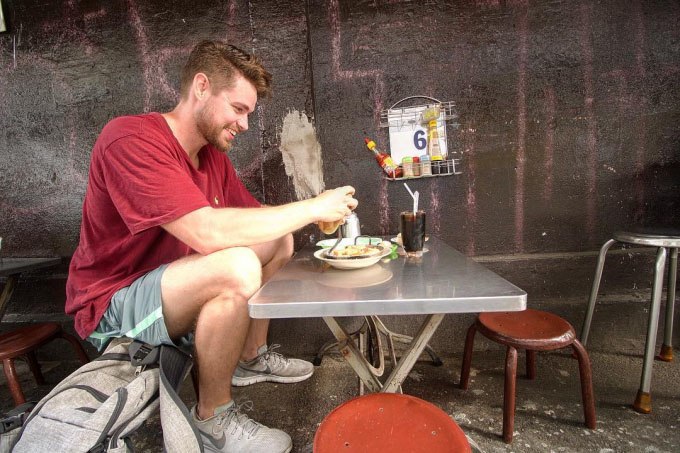
Max McFarlin, the American traveler, has a great love for Vietnamese cuisine (Photo: Max McFarlin)
He was referring to “Bò né”, also known as the “Vietnamese beefsteak”. Max enjoyed this dish at a famous restaurant in District 4, Ho Chi Minh City. From the very first step into the restaurant, he was fascinated by the “open kitchen” concept, allowing everyone to witness the chef’s cooking process.
It was also here that he learned about the special meaning behind this dish.
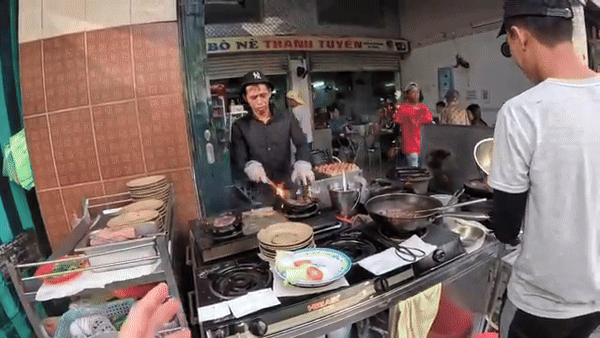
The foreign guest was delighted by the open kitchen concept of the “Bò né” restaurant (Photo: Max McFarlin’s YouTube)
The Meaning Behind the Name “Bò né”
The word “Bò” in “Bò né” refers to the main ingredient of the dish – beef. The word “né” describes the action that both the chef and the diner must perform when preparing and enjoying the dish. “The name is so funny but true. Because the oil in the “Bò né” pan is very hot, both the cook and the diner have to avoid it to prevent the hot oil from splattering on them. The sizzling hot oil in the “Bò né” pan makes a distinctive sound,” Max shared as he stood next to the “Bò né” cooking station.
However, it is this very heat that helps retain the freshness and deliciousness of the dish. The sunny-side-up egg won’t taste fishy, and the beef won’t be chewy. They are beautifully presented with other ingredients on a characteristic black iron pan.
In addition to beef and sunny-side-up egg, a mixed “Bò né” dish may also include pâté, onion, and salad. It is usually served with a dipping sauce and bread. These ingredients are quite similar to those in the foreign “beefsteak.”
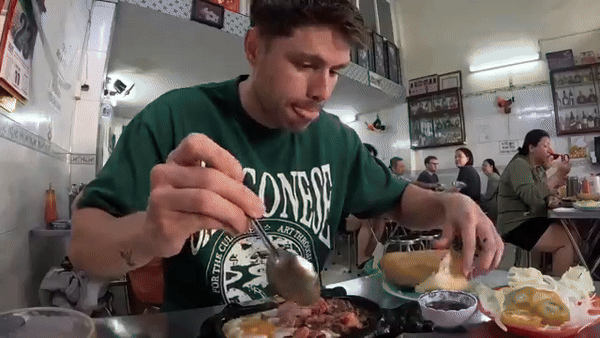
A mixed “Bò né” dish with beef, sunny-side-up egg, hot pâté, and side dishes, served hot to the diner (Photo: Max McFarlin’s YouTube)
According to Max, a mixed dish with all these ingredients costs 60,000 VND, equivalent to about $2.5. Depending on their preferences, diners can choose different variations of “Bò né”, such as “Bò né” with only beef and egg, or “Bò né” with only beef and pâté. To enhance the flavor, one can also add chili sauce, pepper, sugar, or satay to the dish.
What Do People Think About the Taste of “Bò né”?
Every component of the “Bò né” dish delighted Max McFarlin. He loved the slightly charred yet sweet and tender beef on the edges the most. He described the soft-boiled egg yolk as “divine”. When eating, Max sandwiched the ingredients in the bread and savored it happily. He also complimented the sauce and the salads: “You have to eat everything together like this; it’s the standard way. The beef is fragrant and flavorful, and when combined with the egg yolk and the super soft pâté, it’s fantastic.”
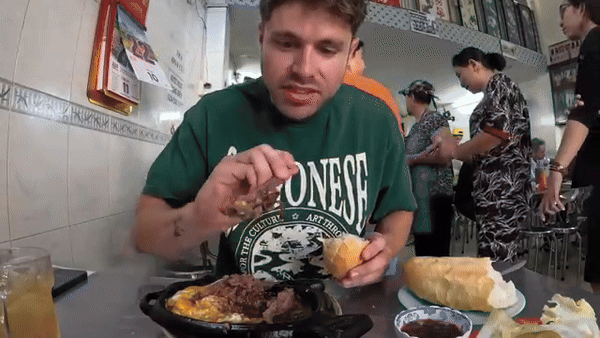
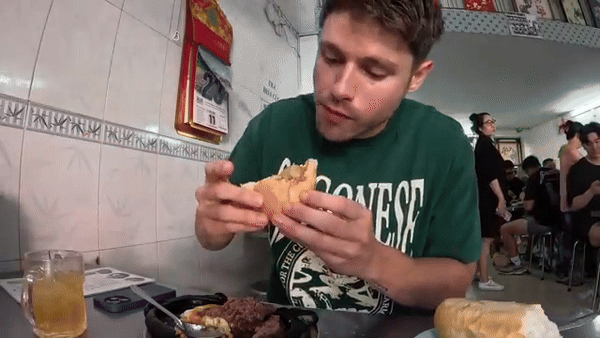
Max Farlin absolutely loved the taste of Vietnamese “Bò né” (Photo: Max McFarlin’s YouTube)
In fact, Max McFarlin is not the first foreign visitor to praise the taste of “Bò né”. Previously, Chad Kubanoff, a foreign chef living and working in Vietnam, also posted a video on his personal page, praising the “Vietnamese version of beefsteak.”
In his video, Chad Kubanoff commented that this might be the “most dangerous” dish in Vietnam because one has to “avoid” it while eating. He preferred to dip the bread with the ingredients, while his children liked the sandwich style (similar to Max’s style). The foreign chef also agreed: “The tender beef is one of the reasons I want to come back. It’s well-marinated and very tasty.”
“Bò né” also appeared in a Korean TV show. When the two guests tasted the dish, they were surprised by its flavor. The name and price of the dish also surprised them: “How come it’s so cheap? The name is so unique. I didn’t expect such a delicious breakfast,” said one of the guests.
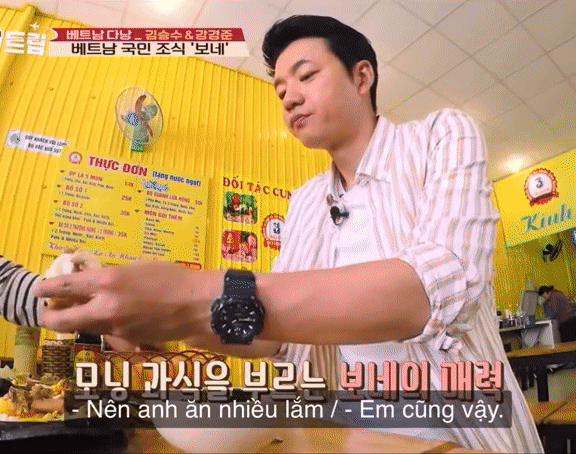
Vietnamese “Bò né” appeared in a Korean TV show and received compliments from the guests.
As we can see, although “Bò né” is a dish inspired by foreign cultures, Vietnamese chefs have creatively adapted it, making it a beloved specialty by both local and foreign tourists. This, in turn, promotes Vietnamese tourism and cuisine. In the past, “Bò né” was mainly sold in the Southern provinces.
Nowadays, it has spread to the Northern and Central regions as well. In addition to the traditional “Bò né”, there are also variations such as “Bò né” stir-fried with noodles or rice vermicelli.
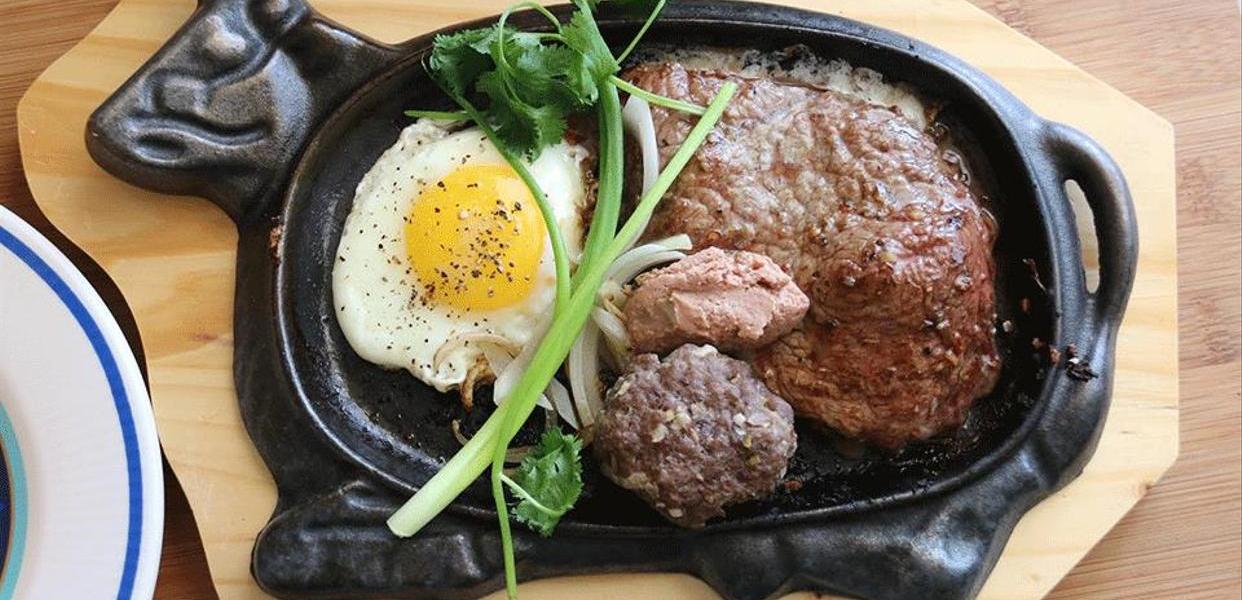
Illustrative image. Thu Phương
“The Untold Secret to African Egg Bread: A Tale of Unappetizing Appetites”
Introducing the latest culinary delight to captivate the hearts and palates of the people of Africa – the humble yet mouthwatering Vietnamese classic, Banh Mi Op La, or more commonly known as Egg Banh Mi. This delectable dish, a beloved staple in Vietnam, is now making its way into the culinary repertoire of African foodies, offering a unique blend of flavors and textures that is sure to tantalize their taste buds.

